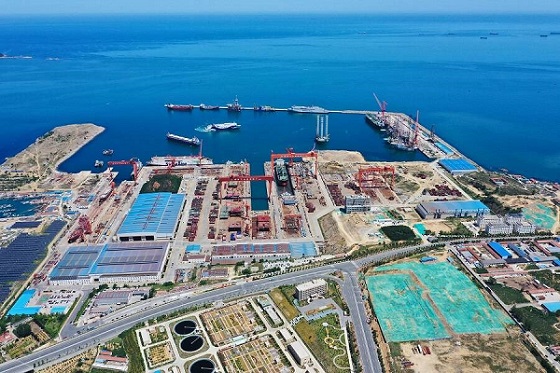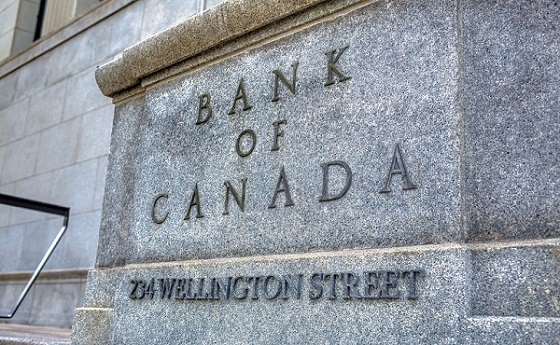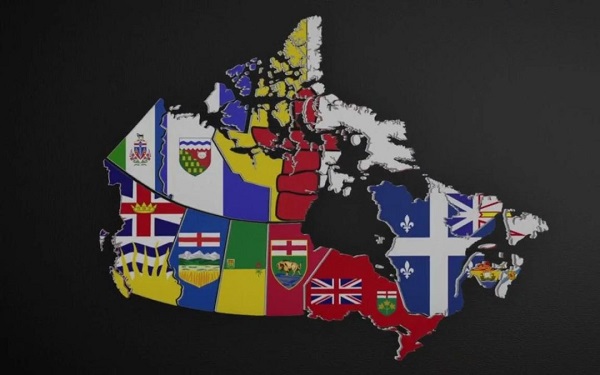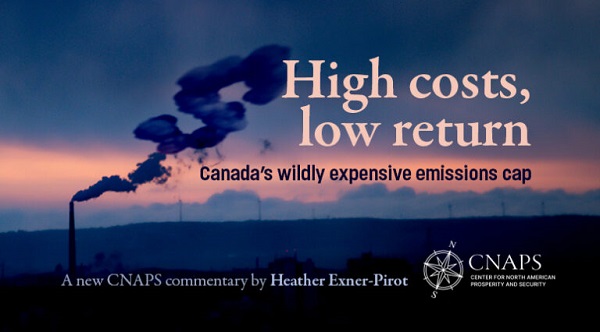Business
Economic progress stalling for Canada and other G7 countries

From the Fraser Institute
By Jake Fuss
For decades, Canada and other countries in the G7 have been known as the economic powerhouses of the world. They generally have had the biggest economies and the most prosperous countries. But in recent years, poor government policy across the G7 has contributed to slowing economic growth and near-stagnant living standards.
Simply put, the Group of Seven countries—Canada, France, Germany, Italy, Japan, the United Kingdom and the United States—have become complacent. Rather than build off past economic success by employing small governments that are limited and efficient, these countries have largely pursued policies that increase or maintain high taxes on families and businesses, increase regulation and grow government spending.
Canada is a prime example. As multiple levels of government have turned on the spending taps to expand programs or implement new ones, the size of total government has surged ever higher. Unsurprisingly, Canada’s general government spending as a share of GDP has risen from 39.3 per cent in 2007 to 42.2 per cent in 2022.
At the same time, federal and provincial governments have increased taxes on professionals, businessowners and entrepreneurs to the point where the country’s top combined marginal tax rate is now the fifth-highest among OECD countries. New regulations such as Bill C-69, which instituted a complex and burdensome assessment process for major infrastructure projects and Bill C-48, which prohibits producers from shipping oil or natural gas from British Columbia’s northern coast, have also made it difficult to conduct business.
The results of poor government policy in Canada and other G7 countries have not been pretty.
Productivity, which is typically defined as economic output per hour of work, is a crucial determinant of overall economic growth and living standards in a country. Over the most recent 10-year period of available data (2013 to 2022), productivity growth has been meagre at best. Annual productivity growth equaled 0.9 per cent for the G7 on average over this period, which means the average rate of growth during the two previous decades (1.6 per cent) has essentially been chopped in half. For some countries such as Canada, productivity has grown even slower than the paltry G7 average.
Since productivity has grown at a snail’s pace, citizens are now experiencing stalled improvement in living standards. Gross domestic product (GDP) per person, a common indicator of living standards, grew annually (inflation-adjusted) by an anemic 0.7 per cent in Canada from 2013 to 2022 and only slightly better across the G7 at 1.3 per cent. This should raise alarm bells for policymakers.
A skeptic might suggest this is merely a global phenomenon. But other countries have fared much better. Two European countries, Ireland and Estonia, have seen a far more significant improvement than G7 countries in both productivity and per-person GDP.
From 2013 to 2022, Estonia’s annual productivity has grown more than twice as fast (1.9 per cent) as the G7 countries (0.9 per cent). Productivity in Ireland has grown at a rapid annual pace of 5.9 per cent, more than six times faster than the G7.
A similar story occurs when examining improvements in living standards. Estonians enjoyed average per-person GDP growth of 2.8 per cent from 2013 to 2022—more than double the G7. Meanwhile, Ireland’s per-person GDP has surged by 7.9 per cent annually over the 10-year period. To put this in perspective, living standards for the Irish grew 10 times faster than for Canadians.
But this should come as no surprise. Governments in Ireland and Estonia are smaller than the G7 average and impose lower taxes on individuals and businesses. In 2019, general government spending as a percentage of GDP averaged 44.0 per cent for G7 countries. Spending for governments in both Estonia and Ireland were well below this benchmark.
Moreover, the business tax rate averaged 27.2 per cent for G7 countries in 2023 compared to lower rates in Ireland (12.5 per cent) and Estonia (20.0 per cent). For personal income taxes, Estonia’s top marginal tax rate (20.0 per cent) is significantly below the G7 average of 49.7 per cent. Ireland’s top marginal tax rate is below the G7 average as well.
Economic progress has largely stalled for Canada and other G7 countries. The status quo of government policy is simply untenable.
Author:
Business
High Taxes Hobble Canadian NHL Teams In Race For Top Players

From the Frontier Centre for Public Policy
By Lee Harding
Canada’s steep income taxes leave NHL players with less cash in their pockets, putting Canadian teams at a serious disadvantage against their U.S. rivals. Find out why it’s not just bad luck that Canada hasn’t won the Stanley Cup in decades.
NHL commissioner Gary Bettman badly underestimates how much higher income taxes in Canada put Canadian teams at a serious competitive disadvantage by reducing players’ take-home pay and limiting their ability to attract top talent.
The NHL salary cap limits how much teams can spend on player salaries each season, so higher taxes mean players on Canadian teams effectively take home less money for the same salary, putting those teams at a disadvantage when competing for talent.
In a recent TNT broadcast, Bettman dismissed the idea that teams might adjust the salary cap to offset income tax differences, calling it “a ridiculous issue” and saying taxes were only “a little bit of a factor.” Pointing to high state taxes in California and New York, he asked, “What are we going to do? Subsidize those teams?”
What Bettman either ignored or didn’t understand is that every Canadian NHL player faces significantly higher income taxes than any of their U.S. counterparts. According to the Fraser Institute’s 2023 study, Ontario’s top marginal tax rate is 53.5 per cent, and even Alberta’s is 47 per cent. Compare that to the highest U.S. state rate among NHL locations—Minnesota at 41.85 per cent, California at 41.3 and New York at 38.85. Several states, including Florida, Texas, Nevada and Tennessee, impose no state income tax at all.
This tax gap translates into huge differences in players’ actual take-home pay, the money they keep after taxes. With a 2024-25 NHL salary cap of US$88 million, Toronto Maple Leafs players collectively earn $5.7 million less after taxes than Edmonton Oilers players, and a staggering $18.9 million less than players on the tax-free Florida Panthers. That difference alone could sign a star player and shift competitive balance.
Leafs fans frustrated by two decades of playoff disappointment should look less to coaches and management and more to Canada’s punishing tax system that drives talent south of the border or limits how much teams can pay. Lower taxes are a proven magnet for high-priced talent, driving better results and stronger teams.
University of Calgary economist Trevor Tombe calls this the “great divergence,” referring to the growing gap between the U.S. and Canadian economies. He points out that U.S. GDP per capita outpaces Canada’s by 43 per cent, and the gap is widening. This economic advantage means U.S. teams operate in wealthier markets with more financial flexibility, enabling them to offer players better after-tax compensation and attract top talent more easily than Canadian teams can.
Canadian teams also face more intense media and fan pressure in smaller markets, adding to their challenges. The NHL’s prolonged Stanley Cup drought for Canadian teams since 1993 isn’t just bad luck. Statistically, the odds of no Canadian team winning the Cup in over 30 years are about one in 781. Tax policy plays a major role in this unlikely streak.
Don’t blame Bettman or the NHL. Blame the Canadian governments that keep imposing high taxes that punish success, stifle economic growth and keep Canadian teams from competing on a level playing field. Unless tax policy changes, Canadian hockey fans should expect more frustration and fewer championships.
Lee Harding is a research fellow for the Frontier Centre for Public Policy.
Business
Outrageous government spending: Canadians losing over 1 billion a week to interest payments

 By Franco Terrazzano
By Franco Terrazzano
Massive borrowing, soaring interest charges unacceptable
The Canadian Taxpayers Federation is calling on the federal government to cut spending following Thursday’s Parliamentary Budget Officer report showing debt interest charges cost taxpayers $54 billion in 2024-25.
“The PBO report shows debt interest charges cost taxpayers more than $1 billion every week,” said Franco Terrazzano, CTF Federal Director. “Massive deficits mean interest charges cost taxpayers more than the feds send to the provinces in health transfers.”
The PBO projects the federal government’s deficit to be $46 billion in 2024-25.
Interest charges on the federal debt cost taxpayers $54 billion in 2024, according to the PBO’s Economic and Fiscal Monitor. For comparison, the federal government spent $52 billion through the Canada Health Transfer in 2024, according to the Fall Economic Statement. That means the government spent more money on debt interest payments than it sent to the provinces in health-care transfers.
A separate PBO report projects debt interest charges will reach $70 billion by 2029.
A recent Leger poll shows Canadians want the federal government to cut spending (45 per cent) instead of increasing spending (20 per cent) or maintaining current spending levels (19 per cent).
“Borrowing tens of billions of dollars every year is unaffordable and unacceptable,” Terrazzano said. “Canadians want
-

 Business20 hours ago
Business20 hours agoOttawa Slams Eby Government Over Chinese Shipyard Deal, Citing Security and Sovereignty Risks
-

 conflict2 days ago
conflict2 days agoVictor Davis Hanson Makes a Disturbing Prediction About What Happens If Iran Survives
-

 Banks1 day ago
Banks1 day agoTop Canadian bank studies possible use of digital dollar for ‘basic’ online payments
-

 Automotive20 hours ago
Automotive20 hours agoCarney’s exercise in stupidity
-

 Automotive2 days ago
Automotive2 days agoSupreme Court Delivers Blow To California EV Mandates
-

 Alberta2 days ago
Alberta2 days agoAlberta Trailblazing On Property Rights Protections
-

 Alberta2 days ago
Alberta2 days agoSecond body recovered from Bow Glacier Falls rockslide. Police identify first victim
-

 Alberta22 hours ago
Alberta22 hours agoHigh costs, low returns – Canada’s wildly expensive emissions cap



